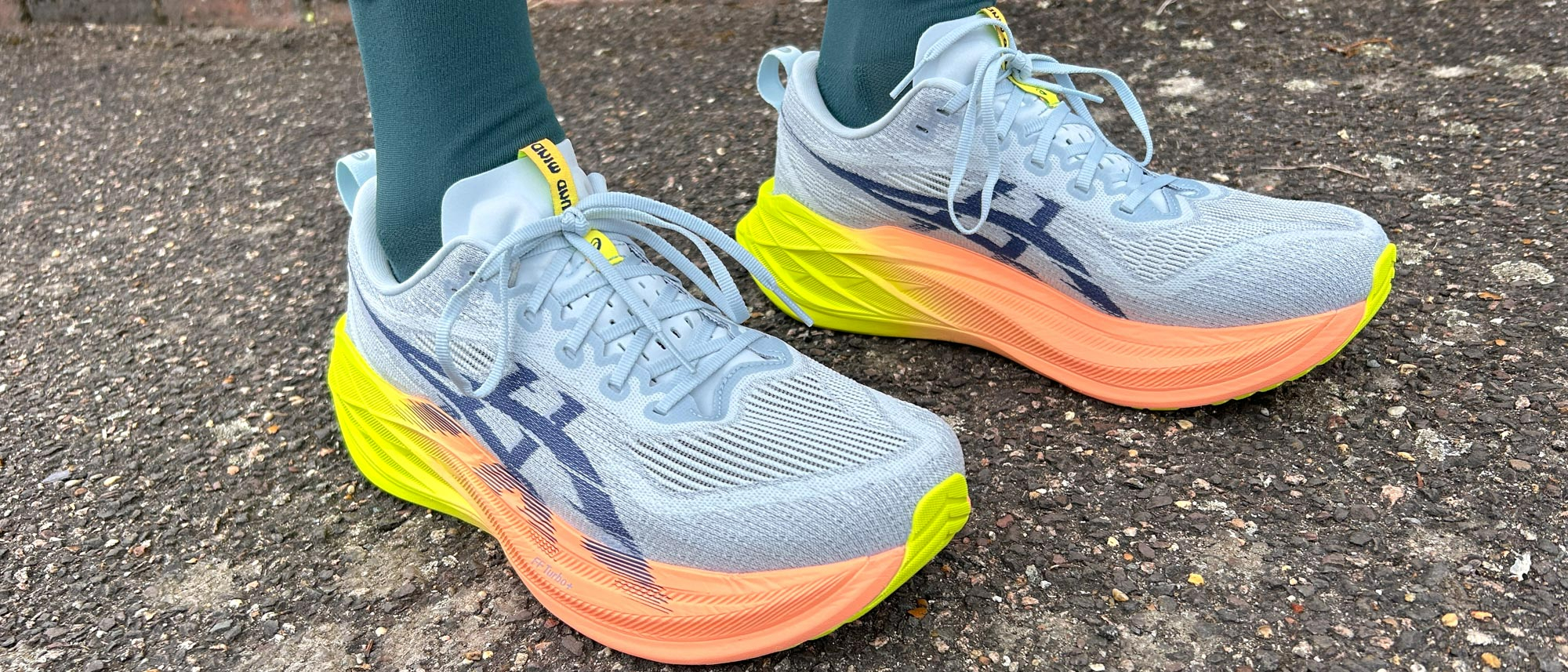Tom's Guide Verdict
The Asics Superblast 2 sticks to a similar design to the original, but upgrades the midsole foam to give the shoe a livelier ride. It’s a brilliant all-rounder and if the high price doesn’t put you off it’s definitely worth considering for your training.
Pros
- +
Cushioned but lightweight
- +
Versatile ride
- +
Excellent for long runs
Cons
- -
More expensive than others
- -
No plate in midsole
Why you can trust Tom's Guide
The Asics Superblast 2 is one of the best running shoes available, offering the ultimate blend of comfort and speed thanks to the very high stack of bouncy foam in the midsole. It’s an outstanding all-rounder for your daily training, being perfect for long runs in particular.
It does come at a high price, however, and there are better value options available from Asics and other brands. I also found the Superblast 2 to only be a minor upgrade on the original Asics Superblast, so it might be worth looking for a deal on the older shoe, although discounts on the Superblast have been near impossible to come by in my experience.
Asics Superblast 2 review: price and availability
The Asics Superblast 2 launched in June 2024 and it costs $200 in the US and £200 in the UK, making it one of the most expensive training shoes on the market. Even super-trainers with plates like the Saucony Endorphin Speed 4 come in cheaper than the Superblast 2, although it's not the only training shoe to cross the $200 threshold and it's actually cheaper than some like the Hoka Skyward X.
Asics Superblast 2 review: design and fit
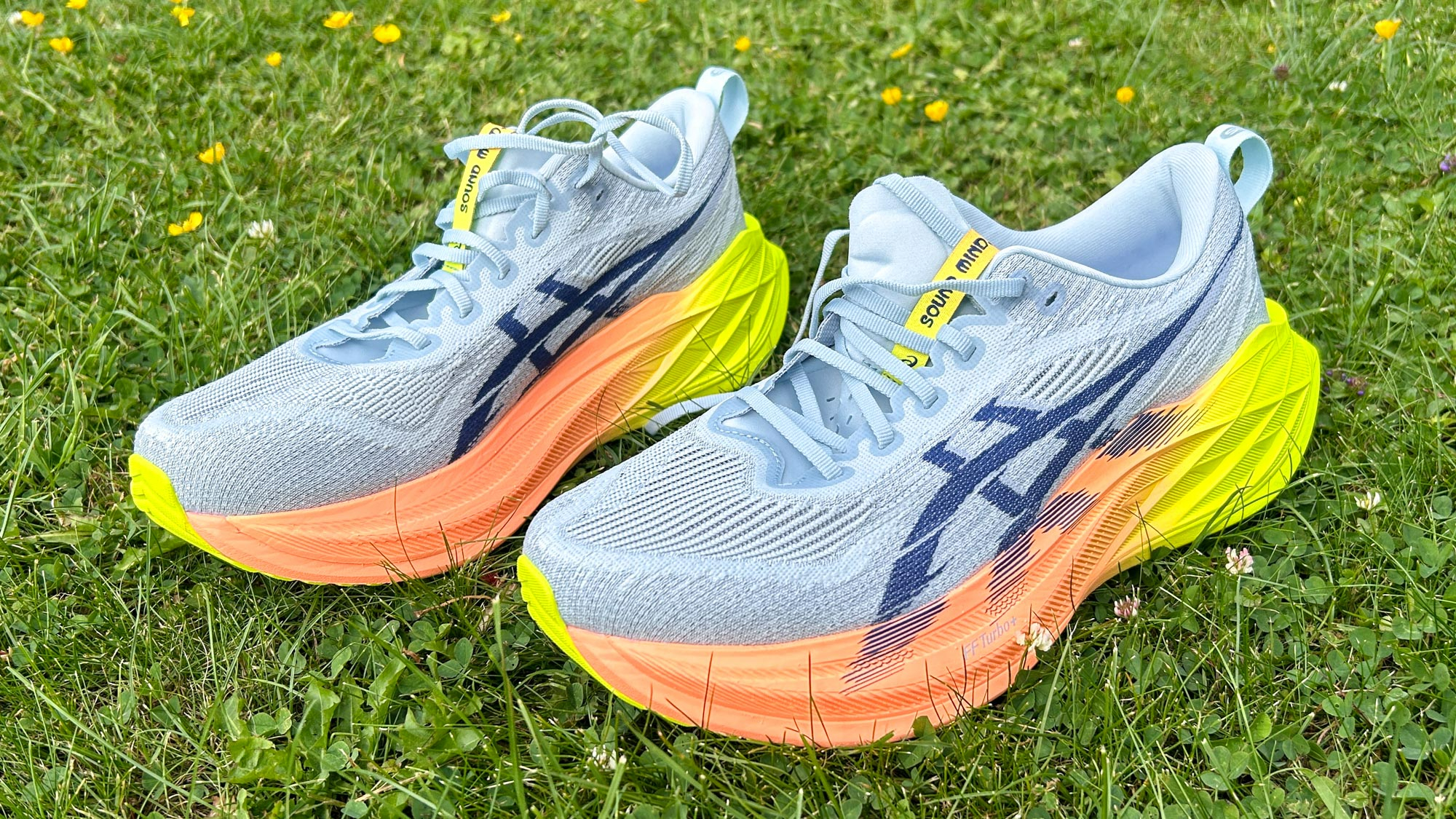
The Asics Superblast 2 is currently available in one color for men and women, which is the grey and yellow design I tested. Although the stack is 0.5mm lower than with the original Superblast, the Superblast 2 is still a very high stack shoe, standing 45mm tall at the heel and 37mm at the forefoot for an 8mm drop.
Despite this high stack it’s a lightweight shoe at 8.9oz in my US size 10. I found that the shoe fit me well in my normal running shoe size — it’s slightly less roomy in the toebox than the original Superblast though, so if you found that a tight shoe then it might be worth trying half a size up.
Upper
The Superblast 2 has an engineered mesh upper with a partially gusseted tongue. There is some padding on the tongue and collar of the shoe, but this is fairly minimal to help keep the weight down. The upper material is breathable and I had no problems with the shoe overheating on long runs on hot days.
Midsole
The midsole of the Superblast 2 is where the biggest update is found. Like the original it uses a dual-density setup with two layers of foam, where the top one is much larger than the bottom one.
However, with the Superblast 2 the top layer is now FF Turbo+, which is the same foam used in the Asics Metaspeed Sky Paris racing shoe, which is lighter, softer and bouncier than the FF Turbo foam used on the original Superblast.
Underneath the FF Turbo+ is a layer of FF Blast Plus Eco, which the same foam that’s used on cushioned shoes like the Asics Gel-Kayano 31 and Asics Gel-Nimbus 26.
Unlike other super-trainers, the Asics Superblast 2 doesn’t have a plate in its midsole. Instead it relies on the springy foams and the geometry of the shoe to deliver the pacy and versatile ride you expect from this type of shoe.
Some will find the lack of a plate a negative, especially given the high price, but the Superblast 2 is still a fast shoe and more comfortable for easy runs because it doesn't use a plate. Many runners also prefer not to use a plated shoe in training, saving that tech for their race day shoe.
Outsole
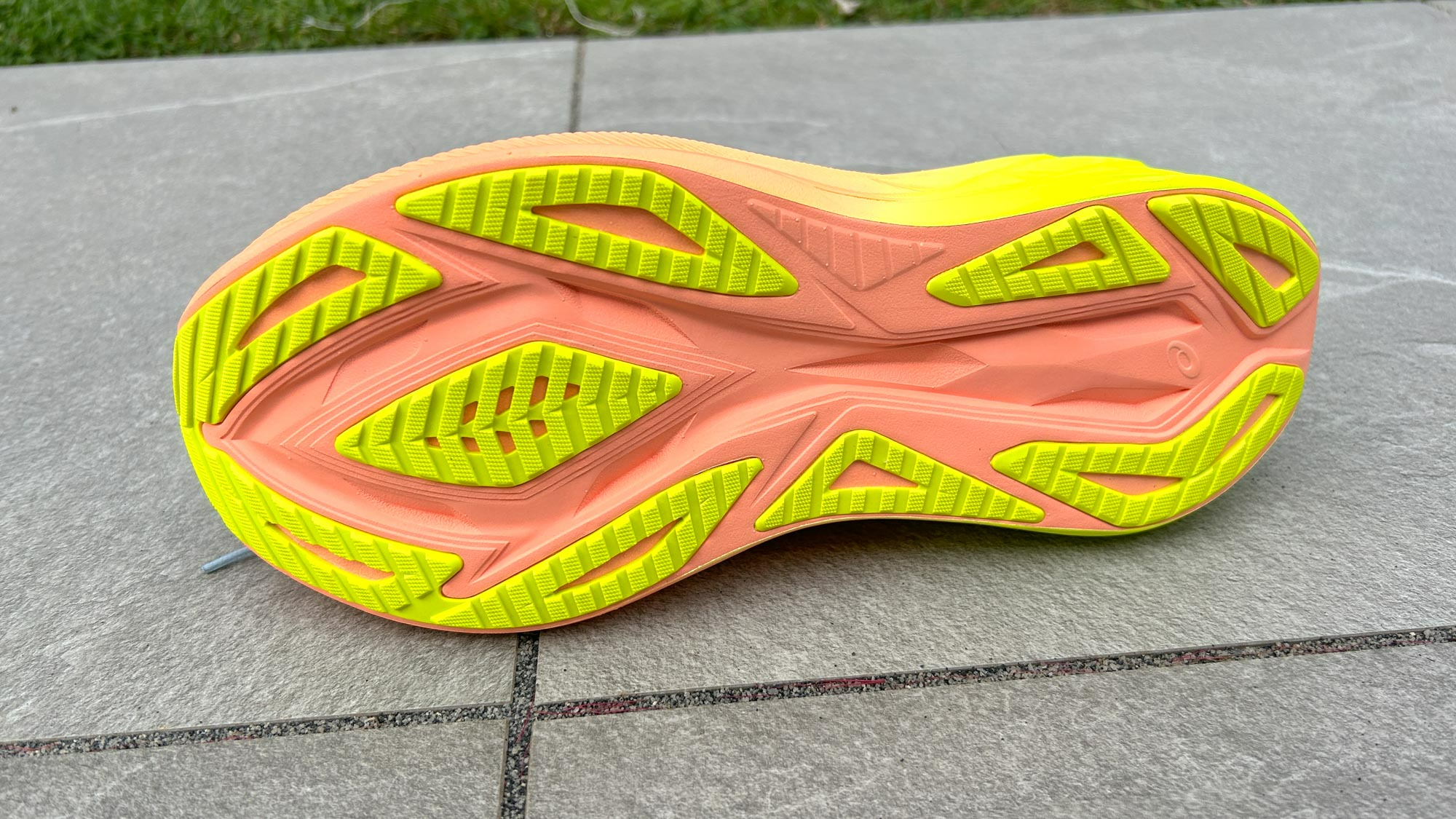
Asics has made some small but significant changes to improve the outsole of the Asics Superblast 2. Like the original Superblast, the Superblast 2 still uses AHAR Plus rubber to cover key impact areas, but the outsole no longer has the little gaps that I found would pick up stones when running in the original.
I have found the shoe grips well on wet and dry pavement and the slightly fuller outsole design makes it a little bit more practical than the Asics Superblast, especially if you plan to run on canal towpaths or gravel tracks as well as roads.
Asics Superblast 2 review: running performance
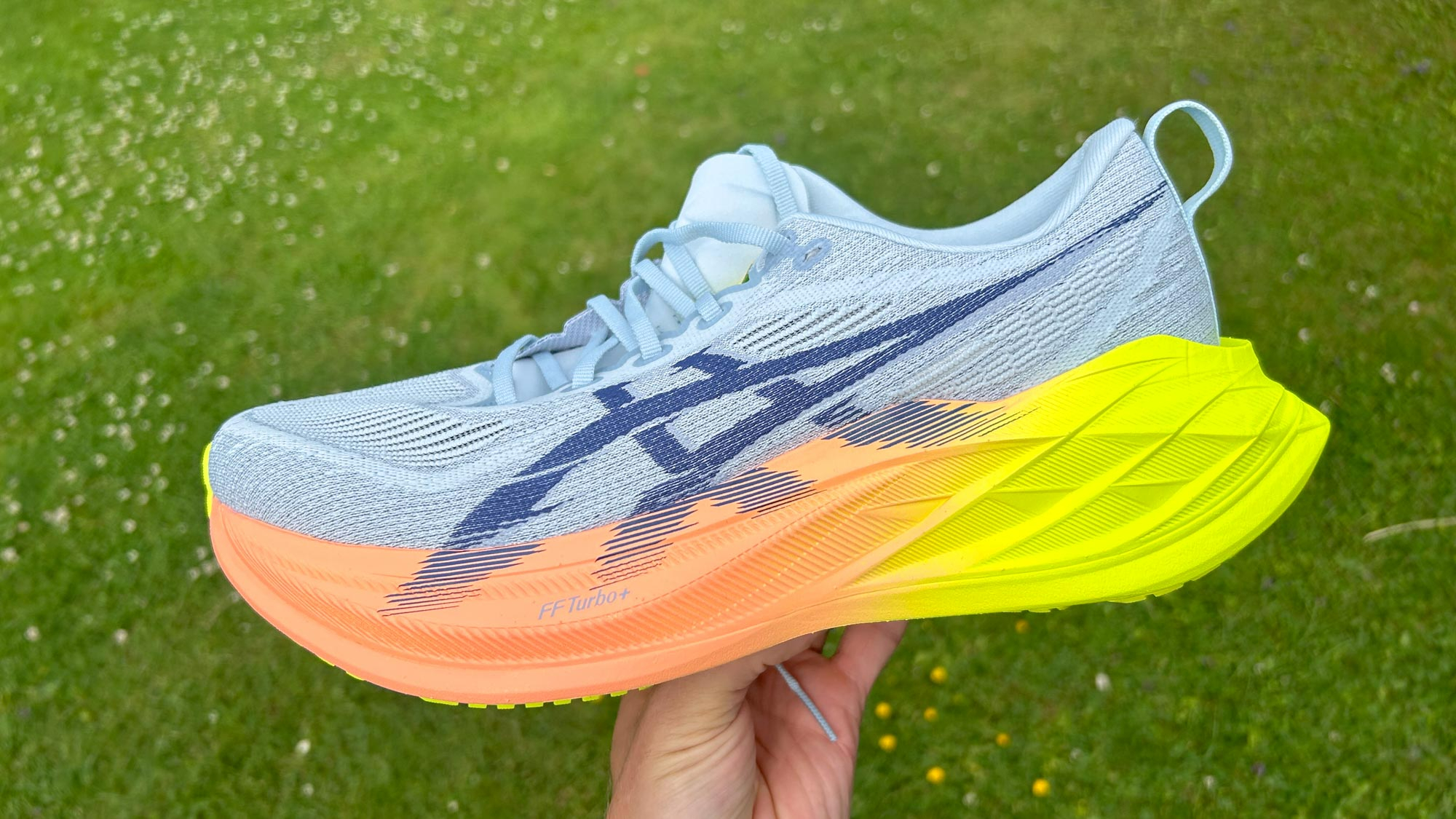
I love the original Asics Superblast and found it one of the most versatile running shoes on the market thanks to its lightweight but highly-cushioned design, which made it suitable for fast and slow runs alike.
Everything I like about the Asics Superblast is still on show with the Asics Superblast 2, but there’s now a little bit more bounce in the midsole thanks to the new foams used.
The difference in ride feel from the original is not huge, but the extra pop does help to make the Superblast 2 even more versatile and enjoyable to use for daily training runs.
I have used it for a wide variety of training runs during my testing, including a couple of progression runs moving from easy to steady paces and a long run with some faster sections thrown in.
When running at any pace the ride is smooth and comfortable and I often found I was running faster than I expected given the effort involved.
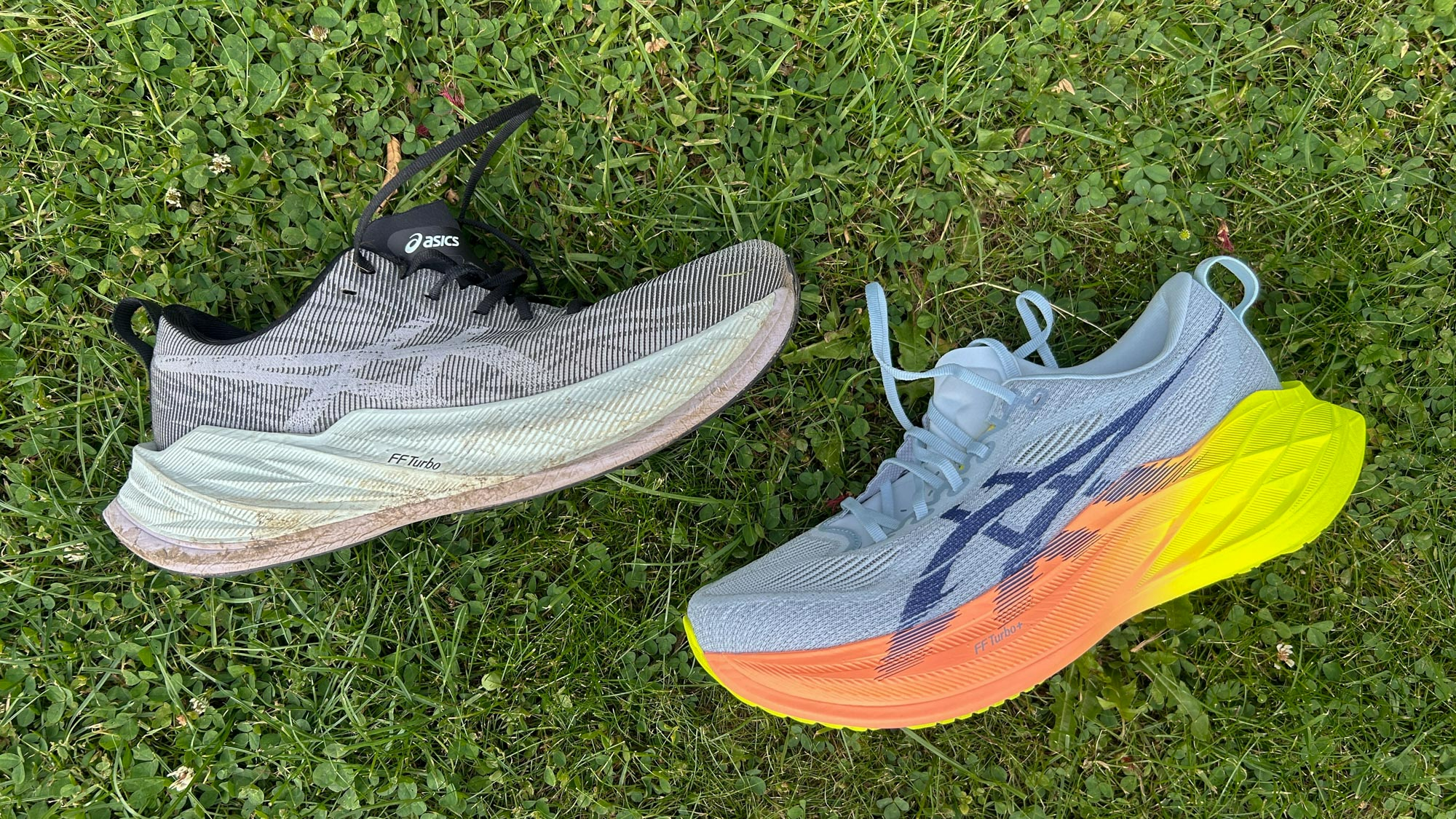
Although there is no plate in the Superblast 2 it still has a responsive ride for faster runs. The midsole feels quite stiff which helps to make it conducive to fast running. Some runners might find it a bit too stiff to work well for very easy paces, but I enjoyed it even on my relaxed runs at slow speeds.
The only caveat I have as to its versatility is that the Asics Superblast 2 is a large shoe and even though it's lightweight this can make it feel slightly unwieldy when you are moving at faster paces.
It wouldn't be my top choice for an interval speed session or a race but it certainly can handle most of the speedy runs on a training plan well while being comfortable for easy runs.
For such a big shoe the Superblast 2 is quite stable and I actually used it as a everyday walking shoe as well as for running, although given the high price you pay you might well want to save it for running.
Should you buy the Asics Superblast 2?
For all its qualities, there’s no getting around the fact the Asics Superblast 2 is a very expensive shoe, and some runners will fairly say they’d never spend $200 on a training shoe. However, unlike some shoes that have crossed the $200 threshold it does offer something a bit special for that price.
I'd say it's the most versatile running shoe going, especially for runners who don't want to use a plated shoe for their training, and it’s very enjoyable to use every day.nThere are certainly better value alternatives though.
If you are willing to use a plated shoe your training the Saucony Endorphin Speed 4 is a versatile shoe that has a bit of an edge on the Superblast 2 when it comes to faster running because of its narrower, nimbler design and the nylon plate in its midsole.
There's also the Mizuno Neo Vista, which I found a very fun and comfortable shoe that worked well for a variety of runs. It has a softer and bouncier ride than the Superblast 2 and while the Asics is a little better for speedwork, the Neo Vista is more comfortable for easy runs.
There are also non-plated alternatives that come in a lot cheaper than the Superblast like the New Balance Rebel v4 and the Hoka Mach 6. I found both of these shoes to be very impressive daily trainers that could handle a wide range of runs. While they might not quite be as bouncy or as fast as the Superblast 2 they are still excellent options that work well for similar runs at a much lower price.

Nick Harris-Fry is an experienced health and fitness journalist, writing professionally since 2012. He spent nine years working on the Coach magazine and website before moving to the fitness team at Tom’s Guide in 2024. Nick is a keen runner and also the founder of YouTube channel The Run Testers, which specialises in reviewing running shoes, watches, headphones and other gear.
Nick ran his first marathon in 2016 after six weeks of training for a magazine feature and subsequently became obsessed with the sport. He now has PBs of 2hr 27min for the marathon and 15min 30sec for 5K, and has run 13 marathons in total, as well as a 50-mile ultramarathon. Nick is also a qualified Run Leader in the UK.
Nick is an established expert in the health and fitness area and along with writing for many publications, including Live Science, Expert Reviews, Wareable, Coach and Get Sweat Go, he has been quoted on The Guardian and The Independent.
